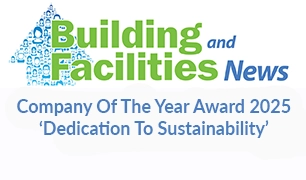Researchers from Imperial College London have declared a ‘milestone event’ that seems to place us on track for net zero as one-third of UK electricity came from wind farms in the first quarter of 2023. This is the first recorded time that wind has out-suppled gas.
In the first quarter of 2023, 42% of the UK’s electricity came from renewable energy, with 33% coming from fossil fuels, predominantly gas and coal. As well as wind, solar has also seen significant growth in the UK, with the National Grid confirming that April saw a record period of solar energy generation.
Since new onshore wind turbines were effectively banned in 2015 in England, the great majority of wind generation now comes from offshore wind farms. But with a new relaxation of planning restrictions on onshore wind turbines, the expectations for wind to continue to deliver a greater percentage of fossil fuel-free grid electricity makes the technology a core aspect of UK aims for all of its electricity to have net zero emissions by 2035.
Switching to renewable power, whether wind or solar, is crucial to curb the impacts of climate change. However, it was revealed this month in a BBC investigation that billions of pounds worth of green energy projects are stuck on hold due to delays with getting connections to the grid.
Some new solar and wind sites are waiting up to 10 to 15 years to be connected because of a lack of capacity in the electricity system. The National Grid acknowledges the problem but says fundamental reform is needed as energy companies are warning that significant delays to connect their green energy projects to the system will threaten their ability to bring more green power online.
And electricity only accounts for 18% of the UK’s total power needs. So, are we really on track for net zero electricity generation by 2035? Achieving this requires a considerable uplift in the number of renewable projects – as many as five times more solar and four times as much wind – but these sites can only supply energy once connected to the grid. This issue stems from a grid designed and built to be supplied by a limited number of large coal-powered plants, not thousands of decentralised suppliers seeking connection at a local level. It is estimated that more than 1,100 projects are currently waiting to be connected, and with planning restrictions on wind relaxing many more are now likely to be joining the queue.
National Grid, which is responsible for moving electricity across England and Wales, says it is tightening up the criteria for projects to apply so only the really promising ones join the queue. But a huge new investment is also required to restructure the grid so it can deal with more power sources.
Energy Networks Association represents the UK’s network operators, such as DNOs, which connect people’s homes to the main system owned by National Grid. It says that the government needs to speed up the planning process so electricity infrastructure can be built more quickly. Ofgem says it has agreed to allow the National Grid to raise an additional £20bn over the next 40 years from customer bills to pay for the huge upgrades the grid needs, and later this year the government is expected to announce a new action plan for speeding up grid connections.
Commercial organisations factoring in a 100% green grid by 2035 as part of their decarbonisation strategy may need to start reconsidering their plans. If we cannot rely on the grid being on track for net zero in the next 12 years, then organisations need to look at how they can generate energy demand locally without depending wholly on grid supply, or Distribution Network Operators (DNOs) that bring electricity from the national transmission network to businesses. We also already recognise that electricity is costly compared to gas (by a factor currently of 3.8) and is intrinsically linked as much of the grid electricity is still produced by gas-burning power stations. The hope is that costs will fall as renewable generation increasingly supersedes gas, but if £20bn additional funding is required for grid connection alone surely, we need to factor in additional operational costs for future electricity-based applications which are at the heart of most decarbonisation strategies. In the long run, our energy supplies should be not only greener but also more secure and cheaper, but what can be done in the interim?
This brings us back to wind and especially solar. Both are technologies that are proven, well understood, truly renewable and can be installed on the property to meet or at least offset some of the grid demands of a business. Wind power remains a complex, highly expensive option with long lead times due to planning restrictions and complex build and installation so is not for everyone, and is only really suitable for properties located in more mixed/rural locations. Solar, both PV and thermal is by far the simpler and more cost-effective option. Whilst PV can supply electricity for multiple applications, for water heating solar thermal is the preferred option. By far the most efficient of the two solar technologies, solar thermal requires fewer collectors to generate similar energy to a PV set-up, so is more versatile when working with available roof space on a property and is extremely robust when deploying drain back technology. This ensures operation with low maintenance for a faster return on investment.
To learn more about decarbonisation and getting on track for net zero visit our resource page or read more about solar thermal for commercial properties.
















